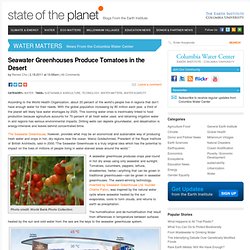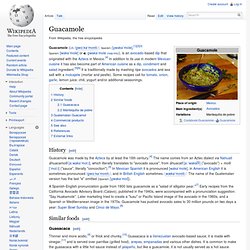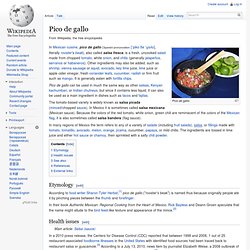

Seawater Greenhouses Produce Tomatoes in the Desert. According to the World Health Organization, about 20 percent of the world’s people live in regions that don’t have enough water for their needs.

With the global population increasing by 80 million each year, a third of the planet will likely face water shortages by 2025. This looming water crisis is inextricably linked to food production because agriculture accounts for 70 percent of all fresh water used, and obtaining irrigation water in arid regions has serious environmental impacts. Drilling wells can deplete groundwater, and desalination is energy-intensive and leaves behind concentrated brine. The Seawater Greenhouse, however, provides what may be an economical and sustainable way of producing fresh water and crops in hot, dry regions near the ocean. Photo credit: World Bank Photo Collection A seawater greenhouse produces crops year-round in hot dry areas using only seawater and sunlight.
Photo credit: Seawater Greenhouse Ltd. Epicute: Set Sail Jello! Naan. Naan. Owning a dairy goat means having a lot of dairy products on hand at all times.

A while back, I got a little carried away and made a gallon and a half of homemade yogurt at one time. We’ve been eating it every day in various different forms: with berry sauce, on cereal, as fruity frozen yogurt, and in my secret pancake recipe. Naan, a traditional Indian flatbread, is one more way to use up extra yogurt. Naan is great for sopping up saucy Indian dishes, but I’ve been using it in a more locavore-fusion context. My lunch the other day (above) was a naan taco slathered with fresh chèvre, homegrown tomatoes and parsley, and a drizzle of balsamic vinegar. Naan The following recipe is adapted from everyday epicurean by Catherine Bell (a cookbook I highly recommend for this and other recipes).
Sprinkle the yeast over the warm water and allow to dissolve. Stir the boiling water into the yogurt, and cool until tepid. Mix the yogurt and the yeast solutions together in a large bowl. Popsicles! Not to sound full of myself, but I’m pretty sure this is the be all, end all of popsicle roundups.

There’s a little something for everyone: the foodies, the purists, the ones who prefer frozen yogurt, the ones who prefer a little alcohol, everyone. Tweny-five options to be exact. The post I did last summer on the cold guys was one of DC’s most viewed ever, so I thought you’d all be up for another round – was I right? Click on the photo to be taken to the recipe. All photos and recipes copyright of their respective source unless otherwise noted. Guacamole. Guacamole (US /ɡwɑːkəˈmoʊliː/; Spanish: [ɣwakaˈmole],[1][2][3] Spanish: [wakaˈmole] or History[edit] Guacamole was made by the Aztecs by at least the 16th century.[4] The name comes from an Aztec dialect via Nahuatl āhuacamolli [aːwakaˈmolːi], which literally translates to "avocado sauce", from āhuacatl [aːˈwakat͡ɬ] ("avocado") + molli [ˈmolːi] ("sauce", literally "concoction").[4] In Mexican Spanish it is pronounced [wakaˈmole], in American English it is sometimes pronounced /ɡwɑːkəˈmoʊliː/, and in British English sometimes /ˌwækəˈmoʊliː/.

The name of the Guatemalan version has the last "e" omitted (Spanish: [ɣwakaˈmol]). A Spanish-English pronunciation guide from 1900 lists guacamole as a "salad of alligator pear. Similar foods[edit] Guasacaca[edit] Green sauce. Green beside Red Mexican sauce style Green sauce is the name of several different sauces containing mainly herbs, namely the Italian salsa verde, the French sauce verte, the Spanish salsa verde and the German Grüne Soße or Frankfurter Grie Soß (Frankfurt dialect).

Mexican salsa verde is based on tomatillos. Pico de gallo. Pico de gallo The tomato-based variety is widely known as salsa picada (minced/chopped sauce).

In Mexico it is sometimes called salsa mexicana (Mexican sauce). Because the colors of the red tomato, white onion, green chili are reminiscent of the colors of the Mexican flag, it is also sometimes called salsa bandera (flag sauce). Bread. Bread is a staple food prepared from a dough of flour and water, usually by baking.

Throughout recorded history it has been popular around the world and is one of humanity's oldest foods, having been of importance since the dawn of agriculture. There are indefinitely many combinations and proportions of types of flour and other ingredients, and also of radically different traditional recipes and modes of preparation of bread. As a result one finds wide varieties of types, shapes, sizes, and textures of breads in various regions.
Bread may be leavened by many different processes ranging from reliance on naturally occurring microbes (for example in sourdough recipes) to high-pressure artificial aeration during preparation and/or baking. Singapore Satay Sauce - Recipes - Recipes24 Net - recipes, cooking, cookbooks and more. Peanut sauce. Peanut sauce, satay sauce, bumbu kacang, sambal kacang, or pecel is a sauce widely used in the cuisines of Indonesia, Malaysia, Thailand, Vietnam, China and Africa.

It is also used, to a lesser extent, in European (particularly Dutch) and Middle Eastern cuisine. Ingredients[edit] The main ingredient is ground roasted peanuts, for which peanut butter can act as a substitute.